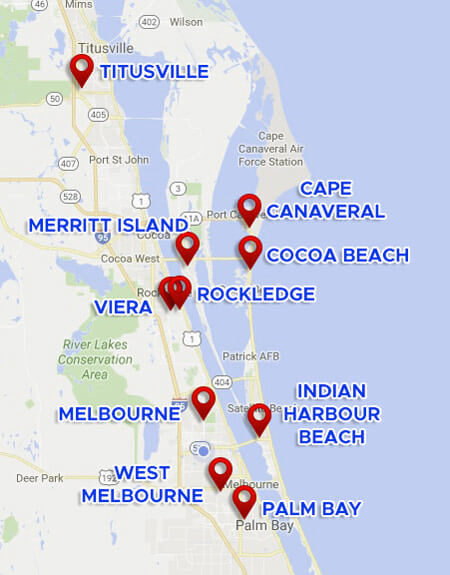How to Lower Your Water Heating Costs
Posted: November 20, 2015

Brevard County residents are always looking for ways to save money and protect the environment. We recently talked about how regular HVAC maintenance can help you do both, but your furnace and air conditioner aren’t the only appliances in your home that drive up your energy bills. While cooling and heating account for about half your annual utility bill, heating water for laundry, dishes, and personal hygiene accounts for the second highest energy expenditure, clocking in at 18 percent of your home’s energy use, according to the U.S. Department of Energy.
So the golden question is, how can you reduce your water heating costs? It’s not like you can do fewer dishes or less laundry, and you certainly don’t want to forego showering just to save a few dollars.
The answer is: Saving money on water heating costs is a two-pronged endeavor that starts at the water heater and ends at the output, and we’re going to tell you exactly how to execute savings, because we, too, care about saving you money and protecting our fragile coastal environment.
It Starts With the Water Heater…
Your poor, lonely water heater is one of the most neglected appliances in your home. Chances are, you haven’t even looked at your water heater in months, unless the closet where it resides is where you also keep your vacuum cleaner. But paying some mind to this all-important appliance can help you save money.
Turn Down the Thermostat
The first thing you’ll want to do is turn down your water heater’s thermostat to 120 degrees.
What? And risk legionellae growth?
you say. The fact is, according to the Department of Energy, there’s only a “very slight risk” of promoting legionellae bacteria at water temperatures of 120 degrees. But if you have a chronic respiratory disease or a suppressed immune system, you’ll want to keep the thermostat at 140 degrees and save elsewhere. Otherwise, expect those 20 lost degrees to save you up to $461 a year in stand-by and demand losses alone.
Insulate the Tank and Pipes
The second thing you should do is insulate the water heater’s hot and cold water pipes and the tank itself. Insulating the pipes reduces heat loss and lowers your wait time for hot water at the faucet, which conserves water. Pipe insulation also raises the temperature of the water in the pipe by up to four degrees, which will offset turning down the thermostat. Use pre-cut foam pipe insulation and electrical tape to insulate at least the first six feet of the pipes or as far as you can reach.
Insulating the tank can save you up to nine percent in water heating costs by reducing standby losses by up to 45 percent. You can find a pre-cut tank jacket or blanket for as little as $20 to make insulating the tank a piece of cake.
Flush the Tank
Sediment that builds up in your water heater tank acts as insulation between the heating element and the water inside, which means it has to use more energy to heat the water and keep it hot. Every three months, hook up a hose to your tank and drain about a quart of water to remove sediment and increase the system’s efficiency. Refer to your owner’s manual for help flushing the tank, or schedule service with Brevard Cooling & Heating, and we’ll show you how to do it as well as check your safety valve, anode rod, and other essential components while we’re at it.
Consider a Replacement Unit
If your water heater is older than seven years, it may be time to start shopping for a new one, according to the Department of Energy, because although your water heater will likely last at least ten years, it’s a good idea to have your research complete and your eye on a new, energy-efficient model in the event yours decides to call it quits mid-shower. There are lots of different types of water heaters, and having a good idea of the one you want will save time later on.
…And Ends at the Output
Controlling the amount of hot water that pours forth from your faucets or into your hot water appliances is the second prong for saving money on water heating. These tips will help you reduce the amount of hot water you actually use.
The Dishwasher
- Use the shortest cycle for all but the dirtiest loads.
- Fill the dishwasher to capacity each time you use it.
- When it’s time for a replacement, opt for an ENERGY STAR model, which uses less hot water and less energy.
The Clothes Washer
- Use cold water for most loads. Hot water increases wear on your clothes, and it’s largely unnecessary for getting them clean.
- For soiled towels and other particularly dirty loads, use hot water, but set the washer to the shortest cycle.
- When it’s time for a replacement, opt for an ENERGY STAR model.
The Faucets
- Install low-flow, aerating faucets and shower heads. These aren’t your dad’s low-flow faucets and shower heads. Nowadays, you can barely tell the difference in flow or pressure, but you’ll definitely notice a difference in your water heating costs and your water bill.
- Repair leaky faucets immediately.
- Take shorter showers. The gallons of hot water you save will add up over the course of a year.
The Bottom Line
Saving money on water heating doesn’t require much of an investment in time or money, but the savings you can reap by tackling these few small tasks can save you a considerable amount of money every year.
Brevard Cooling & Heating is committed to providing our neighbors in Brevard County and beyond with the most up-to-date information about best-practices for saving energy as well as giving you the scoop on energy efficient appliances and new technologies that make your life easier and less expensive. Contact us today for more information about how you can reduce your household energy use to save money and lower your carbon footprint.
Have a specific Heating, Ventilating, & Air Conditioning related question?
Ask a Professional. We’re here to help! Call anytime day or night (321) 757-9008

